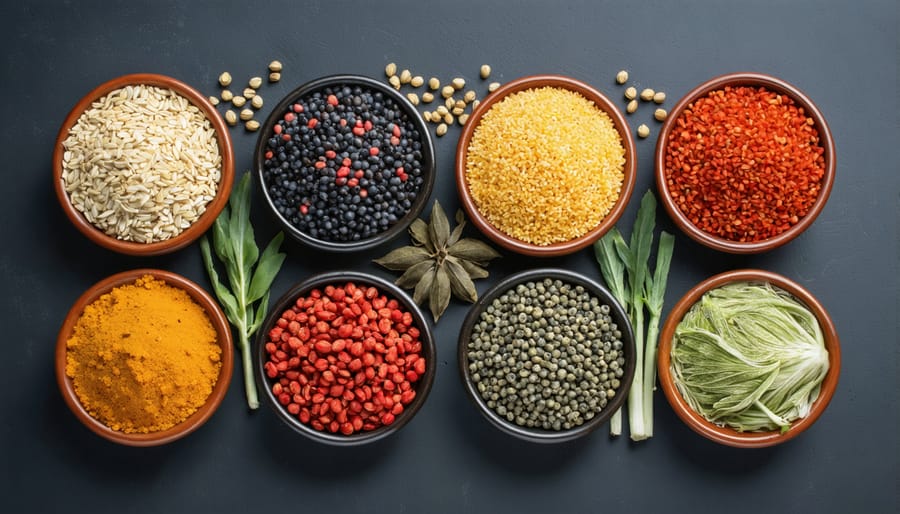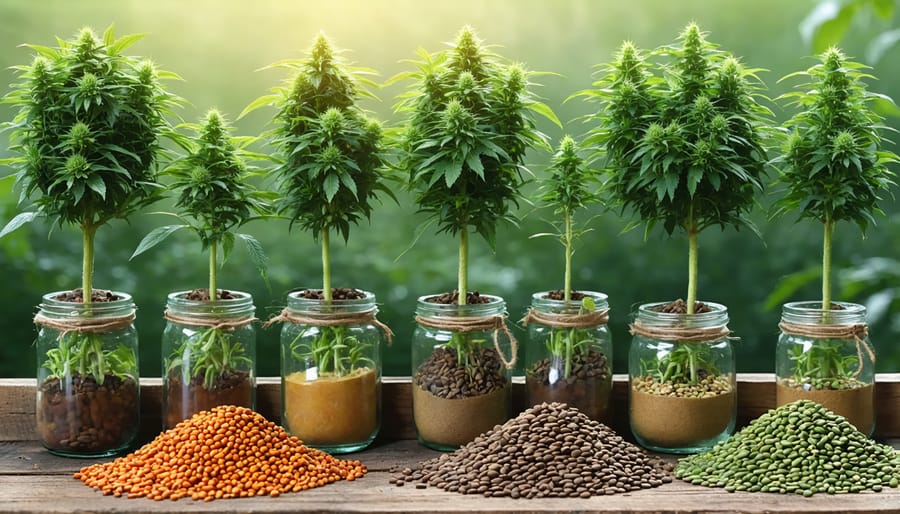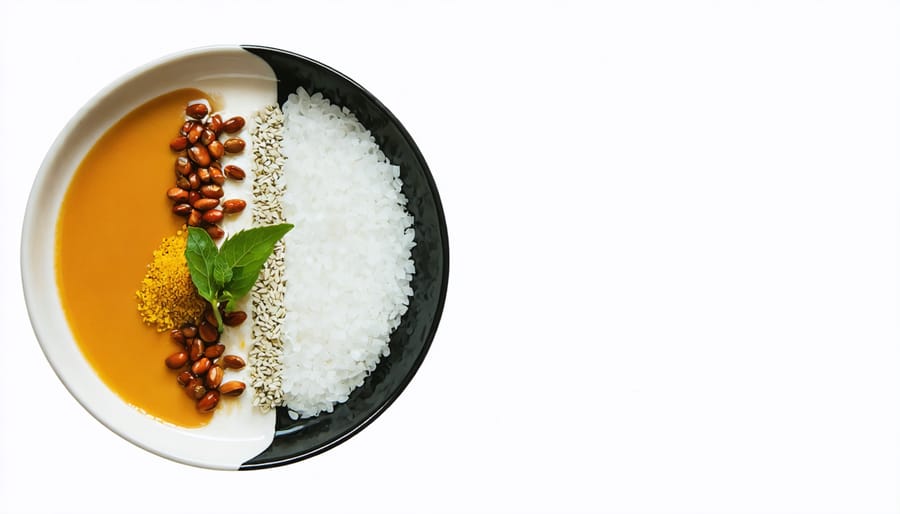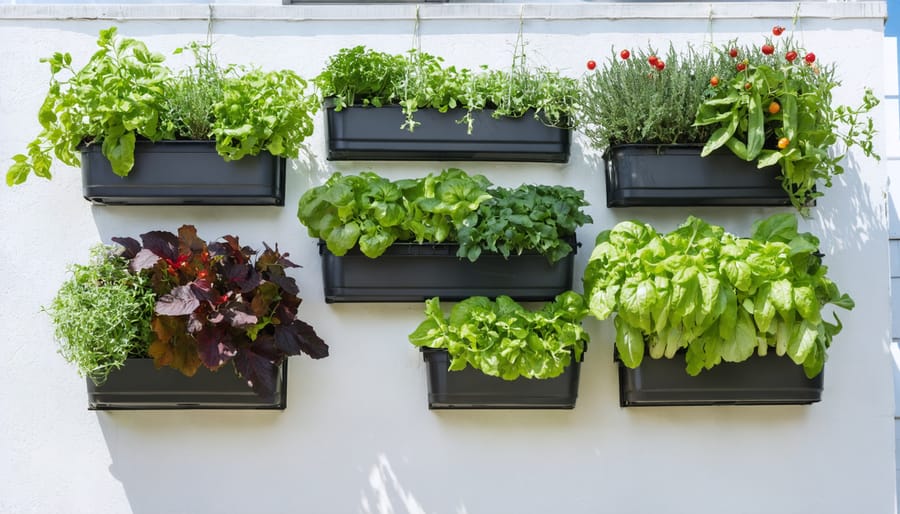Discover the extraordinary world of culinary seeds, where tiny powerhouses of flavor transform ordinary dishes into memorable culinary experiences. From the nutty crunch of toasted sesame to the aromatic pop of mustard seeds, these versatile ingredients have been cherished by cultures worldwide for millennia. Today’s home gardeners and cooking enthusiasts are rediscovering heirloom varieties and exotic seed specimens, creating a renaissance in seed-to-table cuisine.
Whether you’re sowing fennel in your garden or sprinkling poppy seeds on fresh-baked bread, culinary seeds offer endless possibilities for both growing and cooking. These remarkable plant embryos pack surprising nutritional benefits – omega-3 fatty acids in chia, protein in hemp, and essential minerals in pumpkin seeds. Beyond their health benefits, culinary seeds add depth, texture, and complexity to dishes, serving as both standalone ingredients and supporting players in complex recipes.
Join us as we explore the fascinating intersection of gardening and gastronomy, where ancient wisdom meets modern cuisine. From selecting the right varieties for your climate to mastering traditional seed-based recipes, this guide will help you harness the full potential of these tiny but mighty ingredients in your kitchen and garden.
Understanding Culinary Seeds
Defining Culinary Seeds
Culinary seeds are nature’s flavor powerhouses, carefully selected over generations for their taste, texture, and nutritional value. These special seeds go beyond their basic reproductive function to become valuable ingredients in our kitchens. What makes a seed “culinary” is its ability to enhance dishes through distinct flavors, aromas, or textures, while being safe and pleasant to consume.
Not all seeds are suitable for eating – culinary seeds are typically those that have been domesticated and cultivated specifically for human consumption. They should be non-toxic, digestible, and offer some combination of nutritional benefits, flavor compounds, or textural elements that make them worthwhile additions to our meals.
These kitchen-worthy seeds generally fall into three categories: those used as spices (like cumin and fennel), those eaten as snacks or garnishes (such as pumpkin and sunflower seeds), and those used as primary ingredients (like quinoa and chia). Many culinary seeds also serve double duty as both food and medicine in traditional cultures, highlighting their importance beyond just flavor.
Nutritional Benefits
Culinary seeds pack a powerful nutritional punch in small packages. These tiny powerhouses are rich in essential nutrients, making them valuable additions to any diet. Most culinary seeds provide excellent sources of healthy fats, particularly omega-3 and omega-6 fatty acids, which support heart and brain health. They’re also loaded with protein, making them perfect for vegetarian and vegan diets.
Seeds like pumpkin and sunflower are particularly high in minerals such as zinc, magnesium, and iron, while chia and flax seeds offer substantial amounts of fiber that aid digestion. Sesame seeds are calcium-rich, and poppy seeds contain important B vitamins. The antioxidants found in many culinary seeds help fight inflammation and support overall immune function.
What makes these seeds even more appealing is their versatility – they can be enjoyed raw, toasted, or ground, allowing you to reap their nutritional benefits in various delicious ways. Just a small handful daily can contribute significantly to your recommended nutrient intake.

Exotic Culinary Seeds Worth Growing
Ancient Grains and Pseudocereals
Ancient grains and pseudocereals have gained popularity in recent years, offering gardeners exciting alternatives to traditional grains. These nutritious seeds aren’t true cereals but rather flowering plants that produce grain-like seeds packed with protein and minerals.
Quinoa, the star of this group, thrives in cool climates and sandy soils. Its rainbow-colored varieties, from red to black to golden, add visual interest to both gardens and dinner plates. When growing quinoa, space plants about 6 inches apart and expect them to reach 4-6 feet tall. The seeds are ready to harvest when the leaves have fallen and the seedheads are dry and brittle.
Amaranth, another versatile pseudocereal, produces thousands of tiny seeds on dramatic, colorful plumes. This heat-loving plant is perfect for warm-season gardens and can serve as an attractive ornamental while producing a nutritious harvest. The young leaves are also edible, making it a true dual-purpose crop.
Lesser-known but equally fascinating is buckwheat, which isn’t a wheat at all but rather a member of the rhubarb family. It’s one of the easiest pseudocereals to grow, taking just 10-12 weeks from seed to harvest. As a bonus, its fragrant flowers attract beneficial pollinators to your garden.
These ancient grains are remarkably self-sufficient once established, requiring minimal care beyond regular watering and basic soil preparation. They’re excellent choices for gardeners looking to explore traditional food crops while adding diversity to their gardens.
Aromatic Seeds
Aromatic seeds add depth and character to dishes worldwide, transforming simple meals into memorable culinary experiences. Cumin seeds, with their earthy and slightly peppery flavor, are essential in Indian, Mexican, and Middle Eastern cuisines. When lightly toasted, they release an irresistible aroma that forms the foundation of many spice blends and curry powders.
Fennel seeds offer a sweet, licorice-like taste that brightens both savory dishes and baked goods. They’re particularly popular in Italian cooking, where they enhance sausages and add a delightful crunch to bread. Growing your own fennel is rewarding, as both the seeds and the bulb can be harvested for different uses in the kitchen.
Other notable aromatic seeds include caraway, which adds a distinctive flavor to rye bread and European dishes, and ajwain seeds, commonly used in Indian cooking for their thyme-like taste and digestive properties. Nigella seeds, also known as black cumin or kalonji, provide a nutty, onion-like flavor that’s perfect for garnishing flatbreads and curry dishes.
For the best flavor, store these aromatic seeds in airtight containers away from direct sunlight. Toast them lightly in a dry pan before use to enhance their natural oils and intensify their flavors. Many of these seeds can be successfully grown in home gardens, providing fresh, aromatic additions to your cooking throughout the season.
Rare and Unusual Varieties
Beyond the familiar sunflower and pumpkin seeds lies a fascinating world of unique culinary seeds that can transform your cooking and gardening experience. Just as ancient herbs and rare spices add excitement to your garden, these lesser-known seeds offer incredible flavors and textures.
Consider the nutty-flavored nigella seeds, also known as black cumin or kalonji, which add a delightful crunch to Indian and Middle Eastern dishes. The vibrant purple corn seeds from the Andes not only create stunning dishes but also pack powerful antioxidants. Among these rare kitchen treasures, you’ll find Ethiopian teff seeds, tiny powerhouses of nutrition that make excellent gluten-free flour.
For adventurous gardeners, try growing Job’s tears, pearl-like seeds that serve both as food and natural beads. The lesser-known but incredibly versatile amaranth seeds offer a protein-rich alternative to quinoa, with their subtle pepper-like flavor enhancing both sweet and savory dishes.
Don’t overlook perilla seeds, popular in Korean cuisine, which provide a distinct minty-anise flavor, or the crunchy lotus seeds that are prized in Asian desserts and medicinal preparations. These unique varieties not only diversify your garden but also bring exciting new dimensions to your cooking adventures.
Growing Your Own Culinary Seeds
Planning Your Seed Garden
Planning a successful culinary seed garden starts with thoughtful consideration of your space and growing conditions. Whether you have a sprawling backyard or a modest balcony, there’s always room to grow flavorful seeds for your kitchen.
Begin by selecting a location that receives at least 6-8 hours of direct sunlight daily. Most seed-producing plants thrive in rich, life-giving soil with good drainage. Consider creating dedicated beds or zones for different seed families – keeping aromatics like coriander and fennel separate from sweet producers like sunflowers.
When choosing which seeds to grow, start with varieties that match your local climate and growing season. Popular beginners’ choices include dill, mustard, and sesame, which are relatively easy to cultivate and offer great culinary versatility. For more experienced gardeners, try experimenting with unique varieties like Thai holy basil or Persian nigella seeds.
Create a planting calendar that accounts for succession sowing, ensuring a continuous harvest throughout the season. Some plants, like cilantro and dill, benefit from being planted every few weeks to maintain a steady supply of fresh seeds.
Remember to leave adequate spacing between plants – overcrowding can lead to poor seed production and increase disease risk. Consider companion planting strategies; for example, basil grows well alongside tomatoes, while caraway complements root vegetables.
For smaller spaces, focus on high-yield varieties that don’t require extensive room to flourish. Container-friendly options include poppy seeds, sesame, and many herbs. Vertical growing solutions can help maximize limited space while creating an attractive garden display.
Harvesting and Storage
Harvesting culinary seeds at the right time is crucial for preserving their flavor and viability. For most plants, seeds are ready to harvest when their pods or seed heads have turned brown and dry. Gently shake the seed head – if you hear a rattling sound, that’s nature’s way of telling you they’re ready to collect.
To harvest, choose a dry, sunny day and gather seeds in the late morning after any dew has evaporated. Place a clean paper bag or container beneath the seed heads and carefully cut them from the plant. For smaller seeds, you can place the entire seed head in a paper bag and shake it gently to release the seeds.
After collection, cleaning your seeds is essential. Remove any chaff, dried plant material, or debris by gently winnowing – this involves pouring seeds from one container to another in a light breeze, allowing the lighter materials to blow away while the heavier seeds fall into the catching container.
Proper storage is key to maintaining seed viability. Ensure seeds are completely dry before storing – you can spread them on paper towels for several days in a warm, dry place. Once dried, store seeds in airtight containers or paper envelopes. Label each container with the seed type and harvest date.
Keep your seed collection in a cool, dark, and dry location. A dedicated drawer in your refrigerator works well, but make sure seeds are thoroughly dried first to prevent mold. Most properly stored culinary seeds will remain viable for 2-5 years, though their germination rates may decrease over time. Consider doing a germination test before planting older seeds.
Remember to save some of your best seeds for next season’s planting – this helps preserve heirloom varieties and ensures you’ll always have your favorite culinary seeds on hand.

Creative Culinary Applications
Traditional Uses
Culinary seeds have been cherished ingredients in traditional cooking across cultures for thousands of years. From the aromatic cumin and coriander seeds essential to Indian curries to the nutty sesame seeds sprinkled on Asian dishes, these tiny powerhouses of flavor have shaped global cuisines. In Mediterranean cooking, fennel seeds add a distinctive licorice note to Italian sausages and bread, while poppy seeds have long been a staple in Eastern European pastries and breads.
Many traditional recipes begin by toasting seeds to release their essential oils and enhance their flavors. This technique is particularly common in Middle Eastern and North African cuisine, where seeds are often ground with other spices to create complex spice blends like dukkah and za’atar. In Mexican cooking, pumpkin seeds (pepitas) are transformed into rich sauces and garnishes, while mustard seeds are fundamental to pickled vegetables and condiments worldwide.
Beyond their role as seasonings, seeds are also traditionally used as thickening agents in sauces, added to breads for texture and nutrition, and incorporated into sweet treats. The versatility of culinary seeds extends to beverages too, with fennel and caraway seeds frequently used in traditional digestive teas and liqueurs.
Modern Interpretations
Today’s culinary landscape has transformed how we view and use seeds in cooking. Chefs and home cooks alike are discovering creative ways to cook with seeds, moving beyond traditional applications to explore exciting new possibilities.
Seeds are now starring in innovative dishes, from chia seed puddings to pumpkin seed-crusted fish fillets. Plant-based eating has particularly spotlighted seeds as protein-rich alternatives, with sunflower and hemp seeds becoming popular meat substitutes in vegetarian dishes. Exotic seed varieties like black sesame and urfa chile seeds are adding depth and complexity to contemporary cuisine.
Mixologists have embraced seeds in craft cocktails, using toasted coriander and fennel seeds to create distinctive flavor profiles. Meanwhile, artisanal bakers are incorporating seeds not just as toppings but as primary ingredients in gluten-free flour blends and protein-rich bread alternatives.
The wellness movement has also elevated seeds to superfood status, with many home cooks incorporating them into smoothie bowls, breakfast bars, and nutrient-packed snacks. This modern appreciation for seeds combines ancient wisdom with contemporary nutritional science, creating a exciting fusion of tradition and innovation in today’s kitchens.

Culinary seeds are truly remarkable ingredients that can transform both your garden and your kitchen. From the versatile sesame and nutrient-rich chia to the aromatic fennel and flavorful cumin, these tiny powerhouses offer endless possibilities for gardeners and home cooks alike. Whether you’re sprinkling them on salads, incorporating them into baked goods, or growing them in your garden, culinary seeds provide a wonderful way to connect with nature while enhancing your meals with authentic flavors and textures. We encourage you to start small by experimenting with a few familiar varieties, then gradually expand your seed collection as your confidence grows. Remember, every experienced gardener and chef started with a single seed. The joy of growing and cooking with your own culinary seeds is a rewarding journey that’s well worth taking. So grab your gardening tools, prepare your soil, and get ready to explore the fascinating world of culinary seeds – your next kitchen garden adventure awaits!




